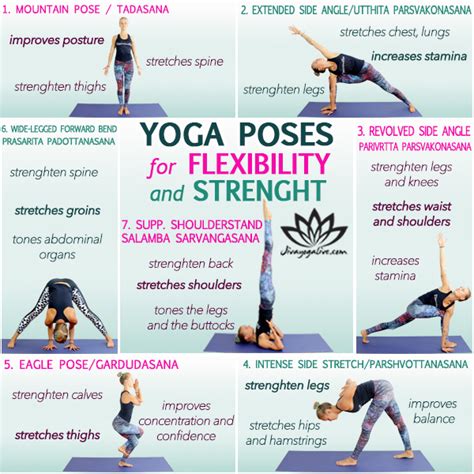Exploring the Best Types of Yoga for Strength Training: A Comprehensive Guide
Yoga is traditionally known for its benefits to flexibility, mental clarity, and stress reduction. However, many people are unaware that certain types of yoga can also be a powerful tool for strength training. By leveraging your body weight and engaging muscle groups through precise movements, yoga can provide a full-body workout that strengthens muscles while enhancing balance and endurance. This guide delves into the various types of yoga suited for strength training, offering a balanced, detailed, and actionable approach for all practitioners—whether you’re a beginner or an advanced athlete.
Key Concepts: Yoga and Strength Training
Before diving into specific styles of yoga, it’s essential to understand the relationship between yoga and strength. Strength training typically involves resistance exercises that build muscle mass by making the muscles work harder than they’re used to. In yoga, this resistance comes from holding poses that challenge muscle groups and progressively strengthen them over time. Key factors such as alignment, breathing, and mindful movement amplify the effectiveness of these poses. Here’s an overview of core concepts:
- Isometric Holds: Many yoga poses (asanas) involve holding static positions, which engage muscles and develop strength without requiring equipment.
- Core Engagement: Most yoga styles emphasize core stability, which is crucial for maintaining balance and executing complex poses.
- Dynamic Movements: Flow-based yoga styles integrate dynamic movements that not only build endurance but also work multiple muscle groups simultaneously.
- Mind-Muscle Connection: Yoga promotes mindful awareness of each movement, which aids in isolating and activating specific muscles during poses.
Historical Context: Yoga’s Evolution into Strength Training
While yoga has roots dating back thousands of years, it wasn’t traditionally linked to strength training. Early yoga was primarily a meditative and spiritual practice, focusing on breath control (pranayama) and seated postures for mental clarity. However, in the 20th century, Western practitioners began adapting yoga to suit modern fitness goals. The influence of physical culture in the early 1900s introduced strength-building elements into yoga practice, blending bodyweight exercises with traditional asanas. Modern forms like Power Yoga, Ashtanga, and Vinyasa Yoga incorporate more physically demanding sequences, transforming yoga into a viable strength training method.
Current State Analysis: Types of Yoga for Strength
In today’s fitness landscape, certain types of yoga have become especially popular for their strength-building benefits. Here’s an in-depth look at each:
| Yoga Style | Characteristics | Strength Focus | Best For |
|---|---|---|---|
| Ashtanga Yoga | Structured series of poses; physically demanding with rapid transitions. | Core, upper body, and stamina. | Intermediate to advanced practitioners looking for a challenge. |
| Power Yoga | Fast-paced, modern form; combines Vinyasa flows with strength-building poses. | Full-body strength, especially legs and arms. | People seeking a high-intensity workout. |
| Bikram Yoga | Set of 26 poses practiced in a heated room; focuses on endurance and flexibility. | Core strength and lower body. | Those who enjoy heat and challenging poses. |
| Vinyasa Yoga | Dynamic flow linking breath to movement; varied and adaptable sequences. | Overall muscular endurance. | All levels, especially those seeking flexibility and strength. |
| Iyengar Yoga | Focuses on alignment, often using props; slow, deliberate poses. | Deep muscle engagement, particularly for balance and joint stability. | Beginners, or those recovering from injury. |
Practical Applications: Integrating Yoga into Strength Routines
Yoga can be integrated into a broader strength training routine or serve as a standalone workout. The following approaches are common ways to incorporate yoga for strength:
- Complementing Weight Training: Use yoga on rest days to improve flexibility, reduce soreness, and balance muscle development by targeting stabilizer muscles.
- Bodyweight Strength Workouts: Yoga can replace traditional bodyweight exercises like push-ups and squats, offering a more holistic and functional approach to strength.
- Warm-ups and Cool-downs: Incorporate yoga stretches at the beginning and end of strength sessions to prevent injury and improve recovery time.
- Focused Core Work: Many yoga poses, such as plank variations and boat pose (Navasana), are ideal for building core strength and stability.
Case Studies: Success Stories from Strength Athletes
Yoga is becoming increasingly popular among athletes and strength trainers who are reaping its benefits. Here are some notable examples:
| Athlete | Type of Yoga | Benefits Observed |
|---|---|---|
| LeBron James | Vinyasa Yoga | Improved flexibility, reduced injury, enhanced mental focus. |
| Tom Brady | Bikram Yoga | Core strength, endurance, injury prevention. |
| Serena Williams | Power Yoga | Full-body strength, balance, increased recovery time. |
| Diamond Dallas Page | Yoga for Athletes | Enhanced strength, improved range of motion, better recovery. |
Stakeholder Analysis: Who Benefits from Yoga for Strength Training?
Yoga for strength training offers wide-ranging benefits for various groups:
- Beginners: Can develop foundational strength without heavy equipment.
- Strength Athletes: Can use yoga to increase flexibility, which improves form in lifting and reduces injury risk.
- Older Adults: Build strength with low-impact movements, preserving joint health.
- Rehabilitation Patients: Gentle strengthening exercises aid recovery from injury.
- Fitness Enthusiasts: Yoga offers a varied approach to strength, which can keep workouts fresh and engaging.
Implementation Guidelines: How to Start a Yoga-for-Strength Routine
When implementing yoga into a strength training program, it’s important to choose the right approach based on fitness levels and goals. Here’s a basic guide:
- Identify Your Goals: Are you looking to complement strength training, improve flexibility, or build functional strength? Your goals will determine the type of yoga you choose.
- Start Slow: If you’re new to yoga, start with beginner-friendly styles like Hatha or Iyengar Yoga to focus on form and alignment.
- Mix It Up: Rotate between different styles of yoga to target various muscle groups. For example, try Vinyasa on cardio days and Power Yoga on strength days.
- Prioritize Consistency: Consistent practice is key. Aim for at least three yoga sessions per week, integrated into your regular routine.
- Monitor Progress: Track your strength gains by paying attention to improvements in pose hold times, balance, and stamina.
Ethical Considerations: Mindfulness and Safety
Although yoga is low-impact, it’s essential to approach it mindfully to avoid injury. Ethical considerations also play a role, particularly regarding body image and inclusivity in the yoga community. Key considerations include:
- Inclusivity: Ensure that yoga spaces and classes are welcoming to individuals of all fitness levels, body types, and backgrounds.
- Body Positivity: Strength training through yoga should promote a positive relationship with one’s body, emphasizing function over appearance.
- Safe Practice: Poses should be adapted to individual capabilities, with instructors guiding participants to avoid overexertion or injury.
Limitations and Future Research









